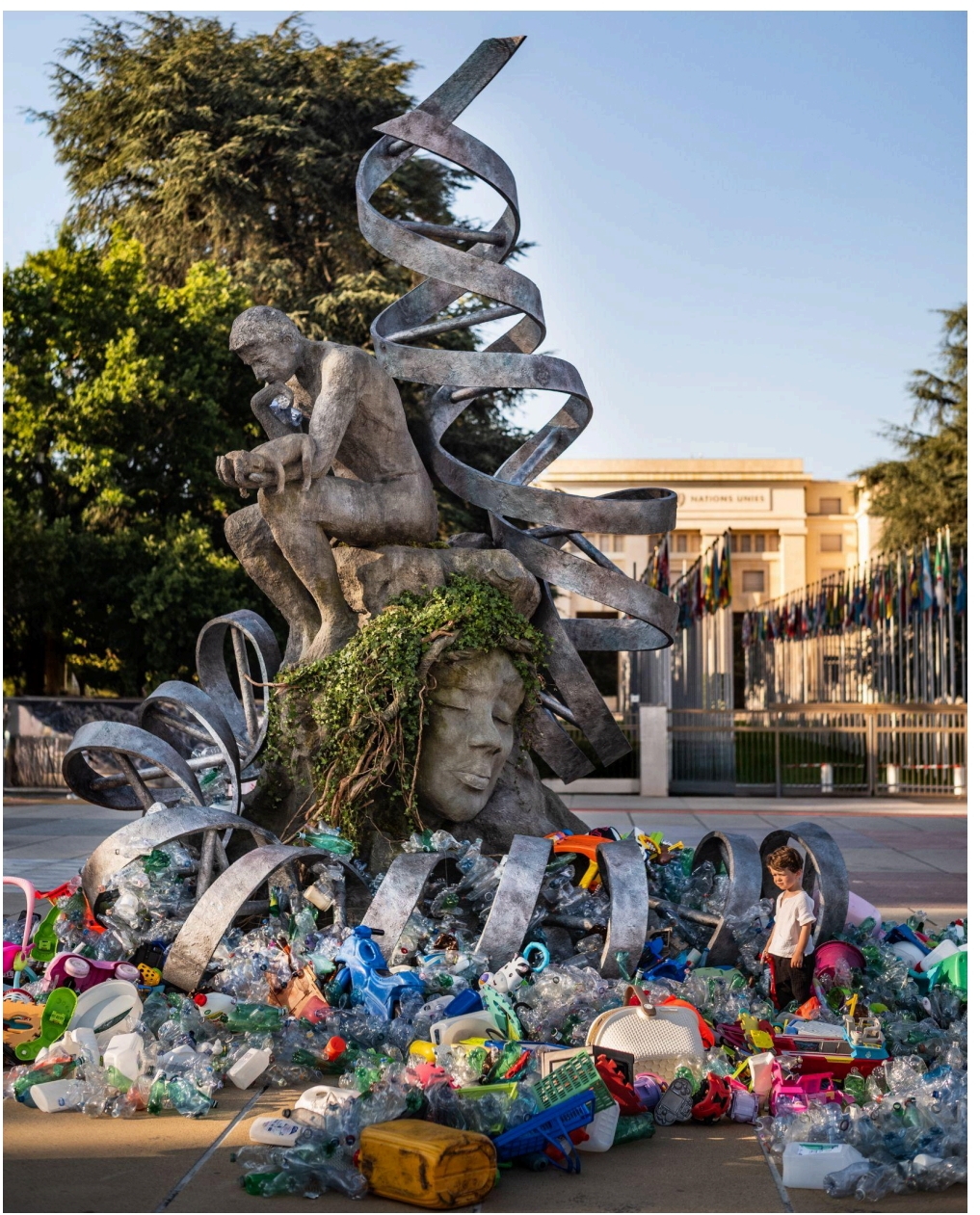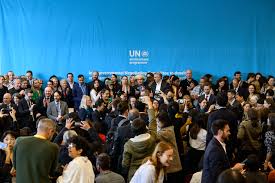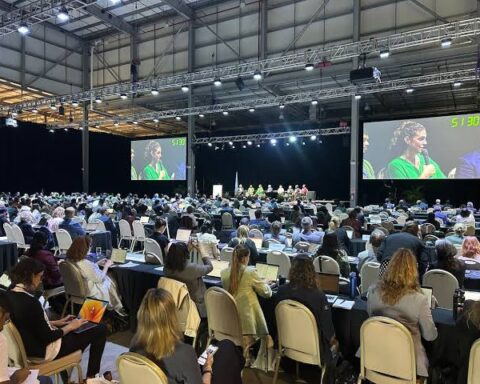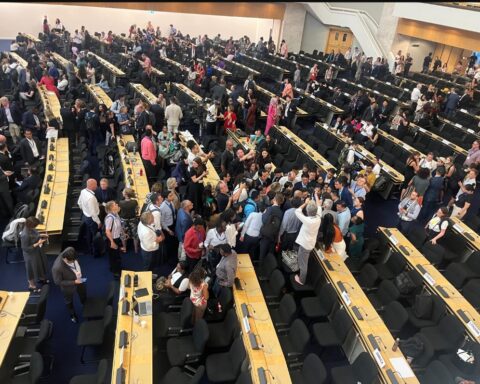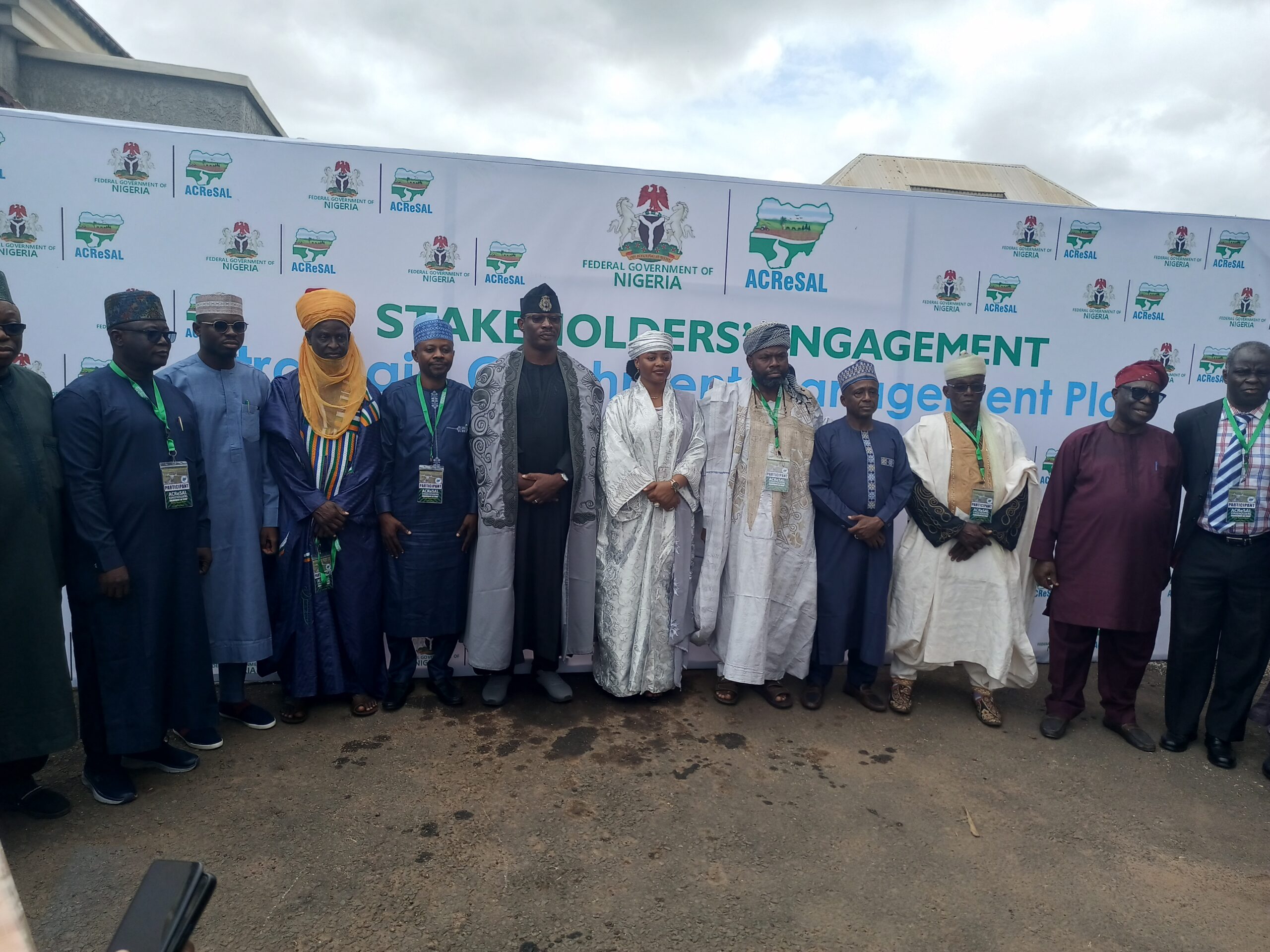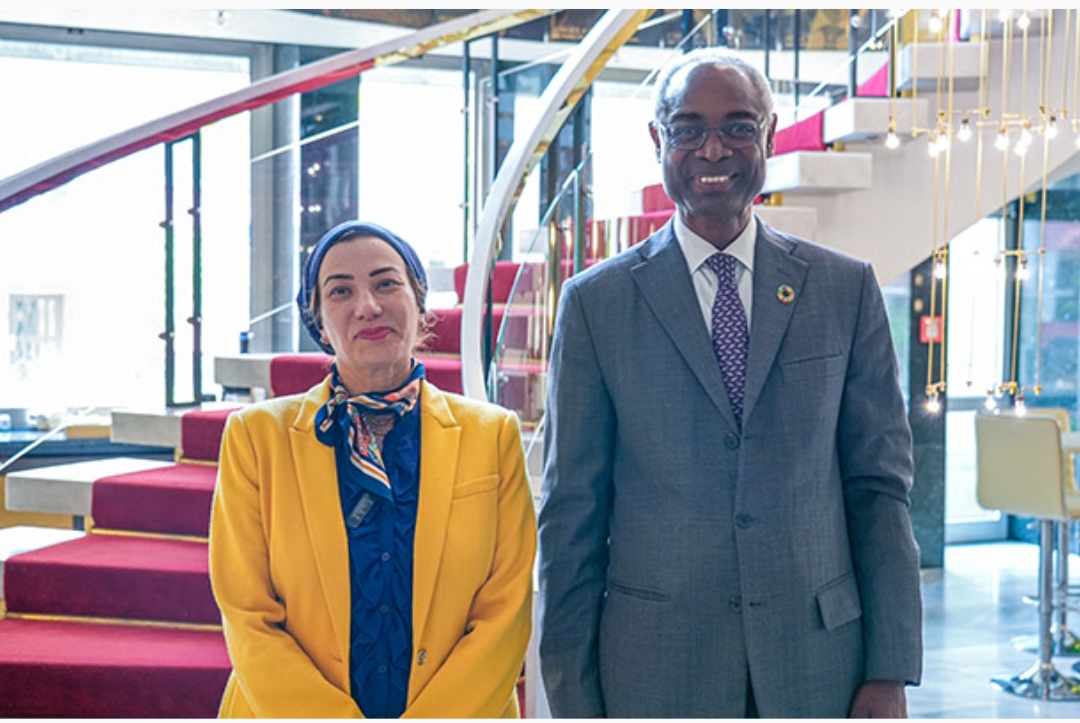As world leaders, scientists, and civil society groups converge for the resumed fifth session of the Intergovernmental Negotiating Committee on Plastic Pollution (INC-5.2), a six-meter-high art installation titled “The Thinker’s Burden” now stands defiantly at the heart of Geneva’s Place des Nations, calling urgent attention to the public health crisis linked to plastic pollution.
Crafted by internationally renowned Canadian artist Benjamin Von Wong, in collaboration with Zurich-based SLS Illusions, the striking sculpture is a symbolic reimagination of Rodin’s The Thinker.
Here, the figure cradles a baby while seated on Mother Earth, with strands of DNA entwining them a stark visual reminder of how plastic pollution invades not just nature but human biology.
Professor Sarah Dunlop, Head of Plastics and Human Health at the Minderoo Foundation, a key partner behind the installation said “This is not just art it’s a call to conscience.
“The Thinker’s Burden represents the moral, environmental, and health weight negotiators carry here in Geneva,” she said.
The sculpture, constructed using wood, steel, papier-mâché, and living vines, will gradually be engulfed by piles of plastic waste throughout the negotiations, dramatically illustrating the compounding urgency of the issue.
Over 20 cubic meters of plastic were collected by volunteers and NGOs to create the immersive display.
According to Von Wong, whose work has featured at the United Nations, World Economic Forum, and COP climate summits, the message of the piece is clear and scientific:
“Plastic pollution is already inside us disrupting hormones, threatening children before they’re born, and infiltrating the air we breathe and the food we eat. This burden is ours to lift, and the time to act is now,” he said.
The Geneva talks, which run from 5 to 14 August, are widely seen as the final window for governments to negotiate a legally binding global plastic treaty.
The goal: to secure an ambitious agreement that goes beyond cleanup and tackles the root causes of plastic pollution unregulated production, toxic additives, and petrochemical dependency.
However, negotiations remain sharply divided. A High Ambition Coalition of countries is pushing for upstream interventions, including production caps and additive bans, while a bloc of Low Ambition Countries advocate for less stringent, downstream approaches centered on waste management and recycling.
Dr. Bethanie Carney Almroth, Co-Coordinator of the Scientists’ Coalition for an Effective Plastics Treaty said art is a powerful tool to communicate science.
“The Thinker’s Burden graphically shows how deeply plastics are tied to our health and environment,” he said.
Luis Vayas Valdivieso, Chair of the INC process, echoed the urgency saying, “This compelling art piece reminds us why our work matters. It highlights both the responsibility we carry and the urgency to act.”
As delegates deliberate inside the Palais des Nations, the sculpture stands outside against the backdrop of the iconic Alley of Flags as a public and moral challenge.
It asks a fundamental question: Will the global community rise to meet this crisis, or leave future generations buried beneath its consequences?
The world watches as Geneva hosts what could become the most consequential environmental treaty negotiations since the Paris Climate Accord.
Standing tall amid the tension, The Thinker’s Burden reminds all involved that inaction is no longer an option.
By Dare Akogun


